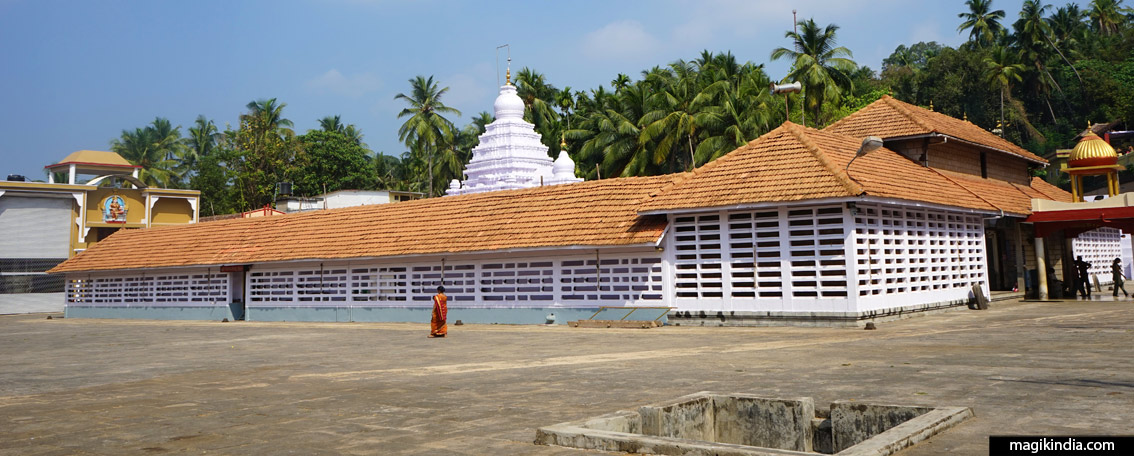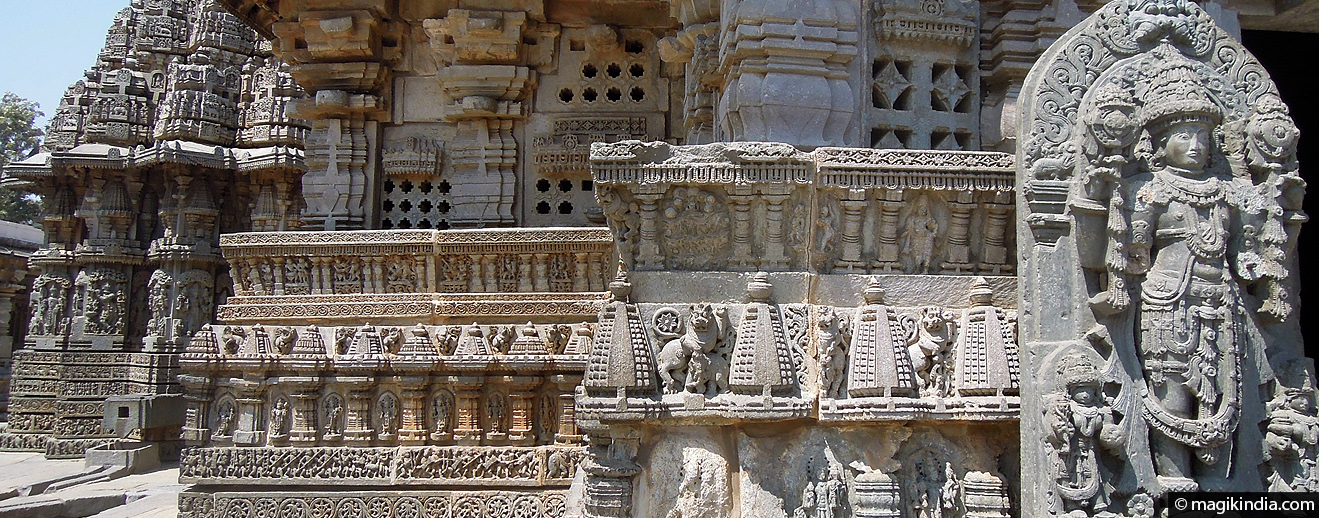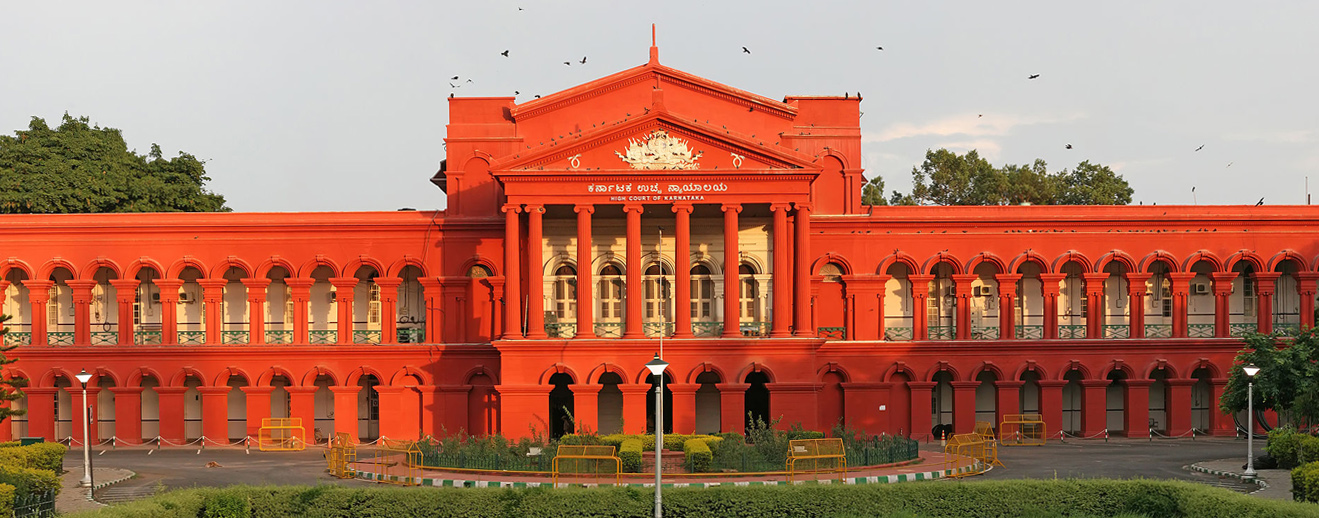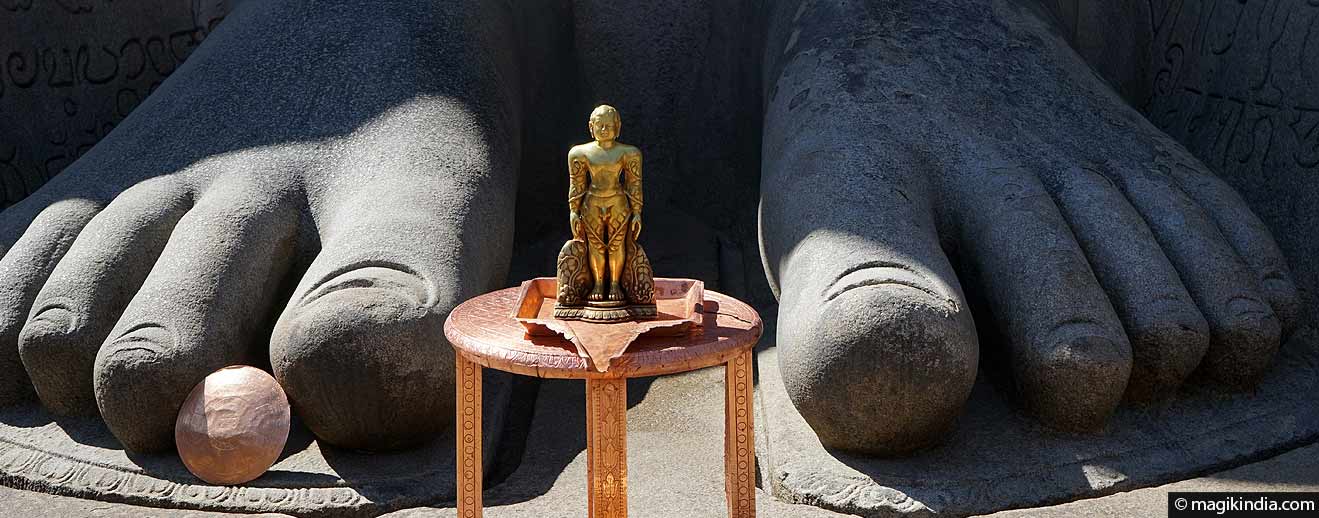
Belur (Beluru), city of the “handsome Vishnu”
Belur was the first capital of the Hoysala Empire. This city was then so esteemed that it was compared to the “terrestrial Vaikuntha”, that is to say, to the abode of the god Vishnu on earth. The main attraction of Belur is Chennakeshava Temple, a Hindu temple which, like those at Halebid and Somnathpur, reflects the excellence and ingenuity of the Hoysala temple builders.
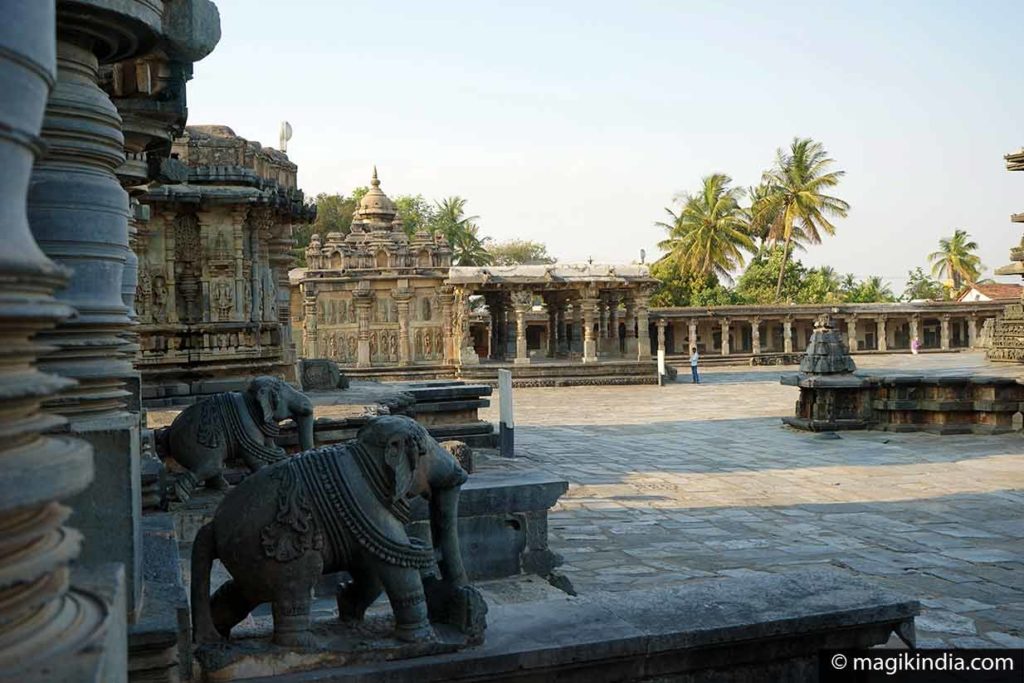
Chennakeshava, the main temple of Belur
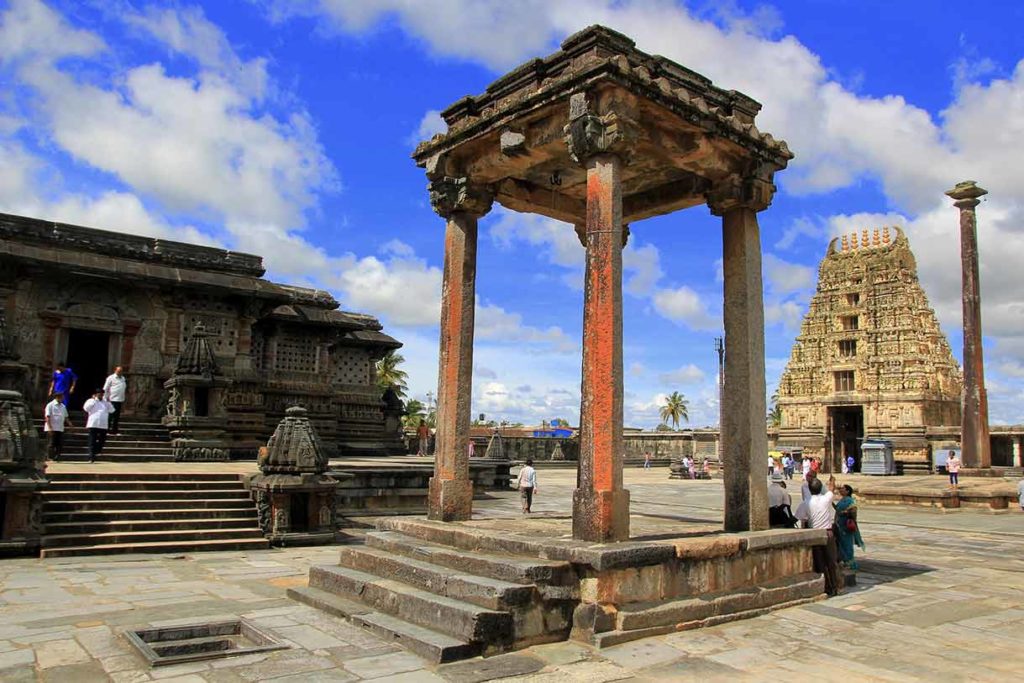
The entrance to the temple is a gopuram (tower) in Dravidian style. This was added later by the Vijayanagar kings, who regarded Vishnu as their patron saint.
The main sanctuary, the Chennakeshava temple at the centre of the complex, still functions. It is dedicated to the god Vishnu (Chennakeshava means “handsome Vishnu”).
Commissioned by King Hoysala Vishnuvardhana in 1117 AD, the building will take over 100 years to complete; Veera Ballal II, grandson of Vishnuvardhana, will oversee its completion.
Chennakeshava was originally built to commemorate an important military victory of King Vishnuvardhan over the Cholas.
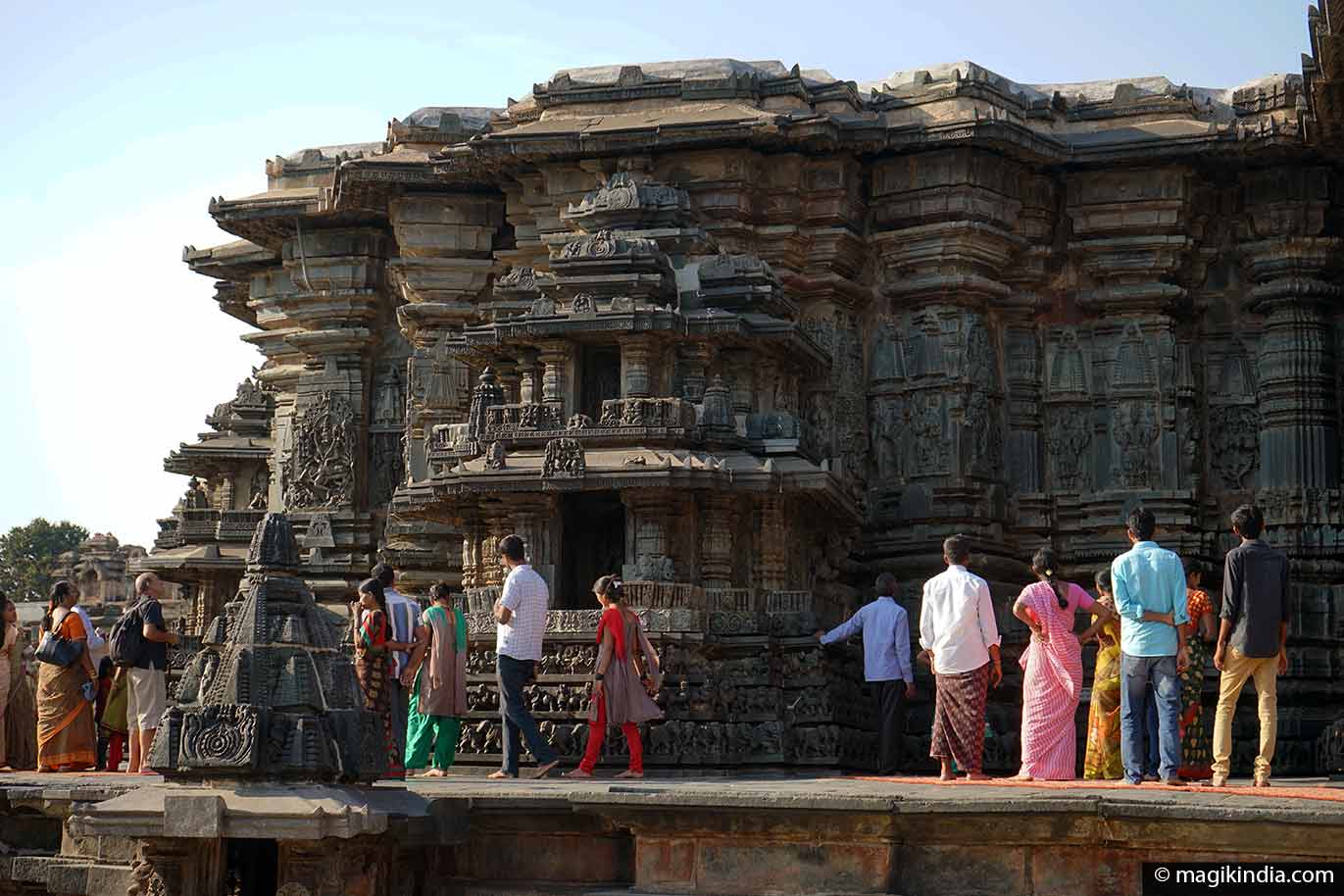
The building is, like any Hoysala temple, built on a star-shaped platform. It include a Garbhagriha (inner shrine), a vestibule and a Mandapa (inner pillar hall).
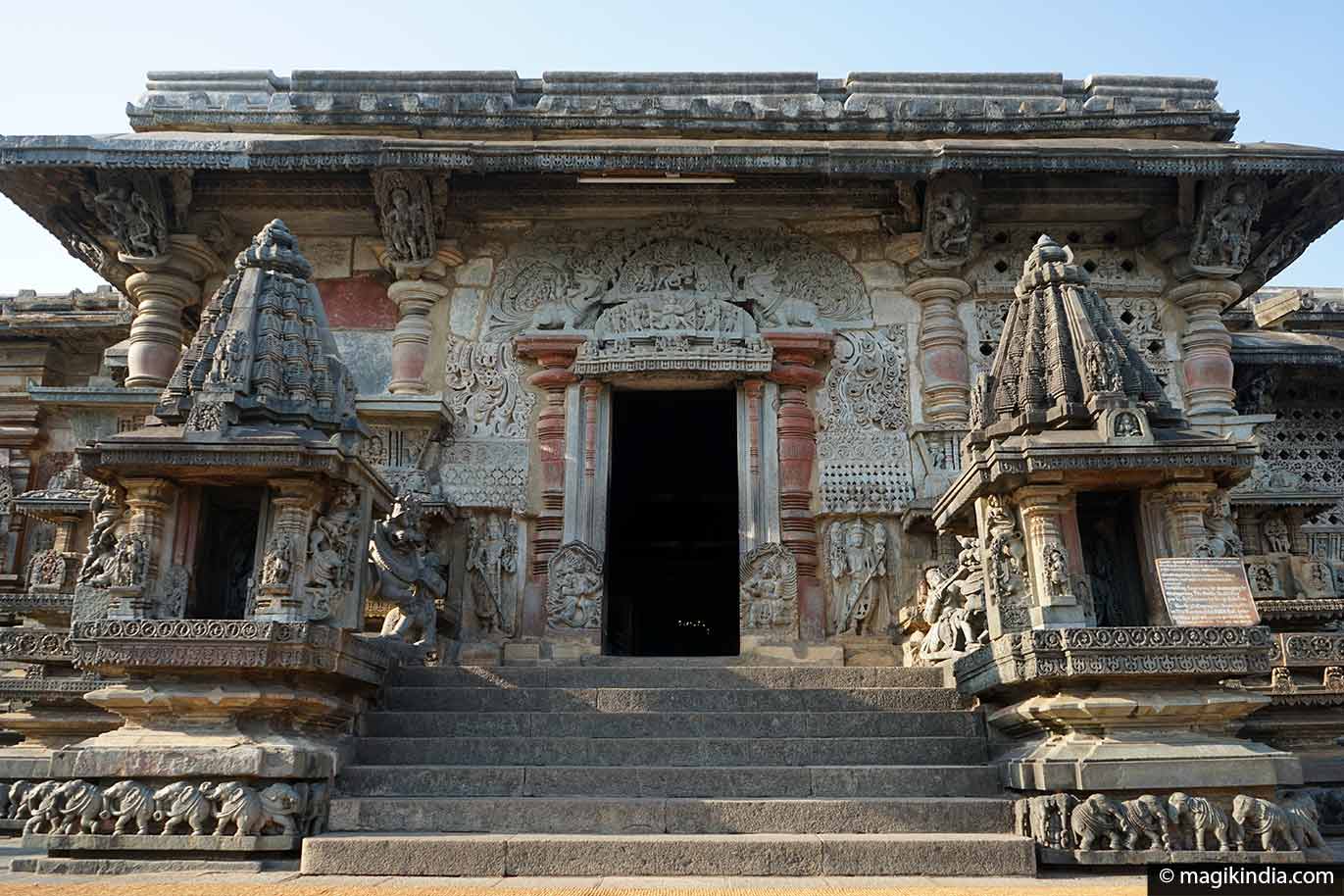
The main entrance to the temple is sublimely decorated with jagged patterns, makara torana (a mythological aquatic animal) and temple guardians. On each side there are also two imposing sculptures of the young warrior Sala slaying a tiger.
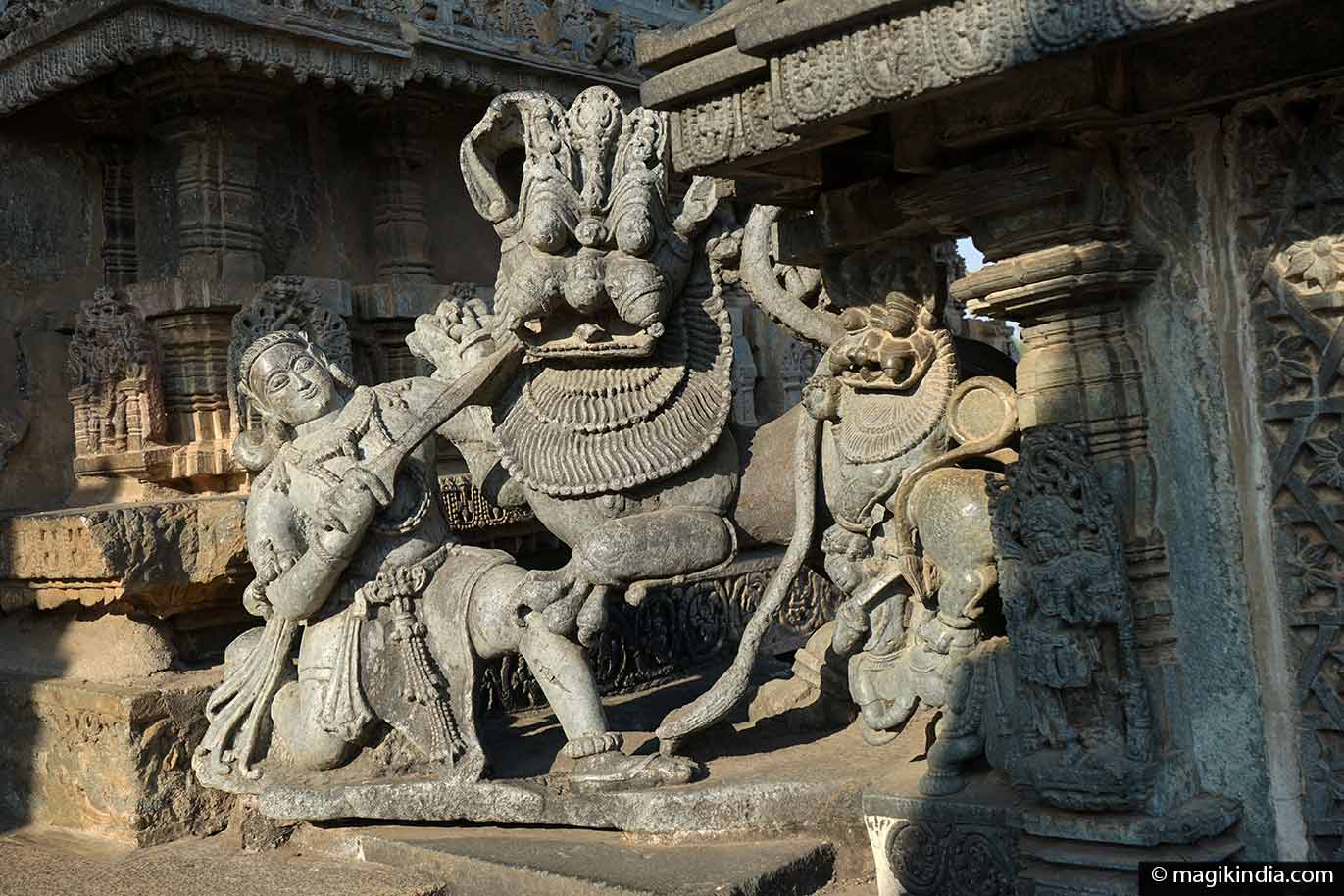
The spaces between the exterior pillars are covered with jalis (openwork panels) which not only ensured the privacy of the priests, but also provided an ingenious system of natural ventilation.
In front of this entrance, we come across a superb statue of Garuda, the divine vehicle of Vishnu, one of the most beautiful representations of this bird-man I have ever seen.
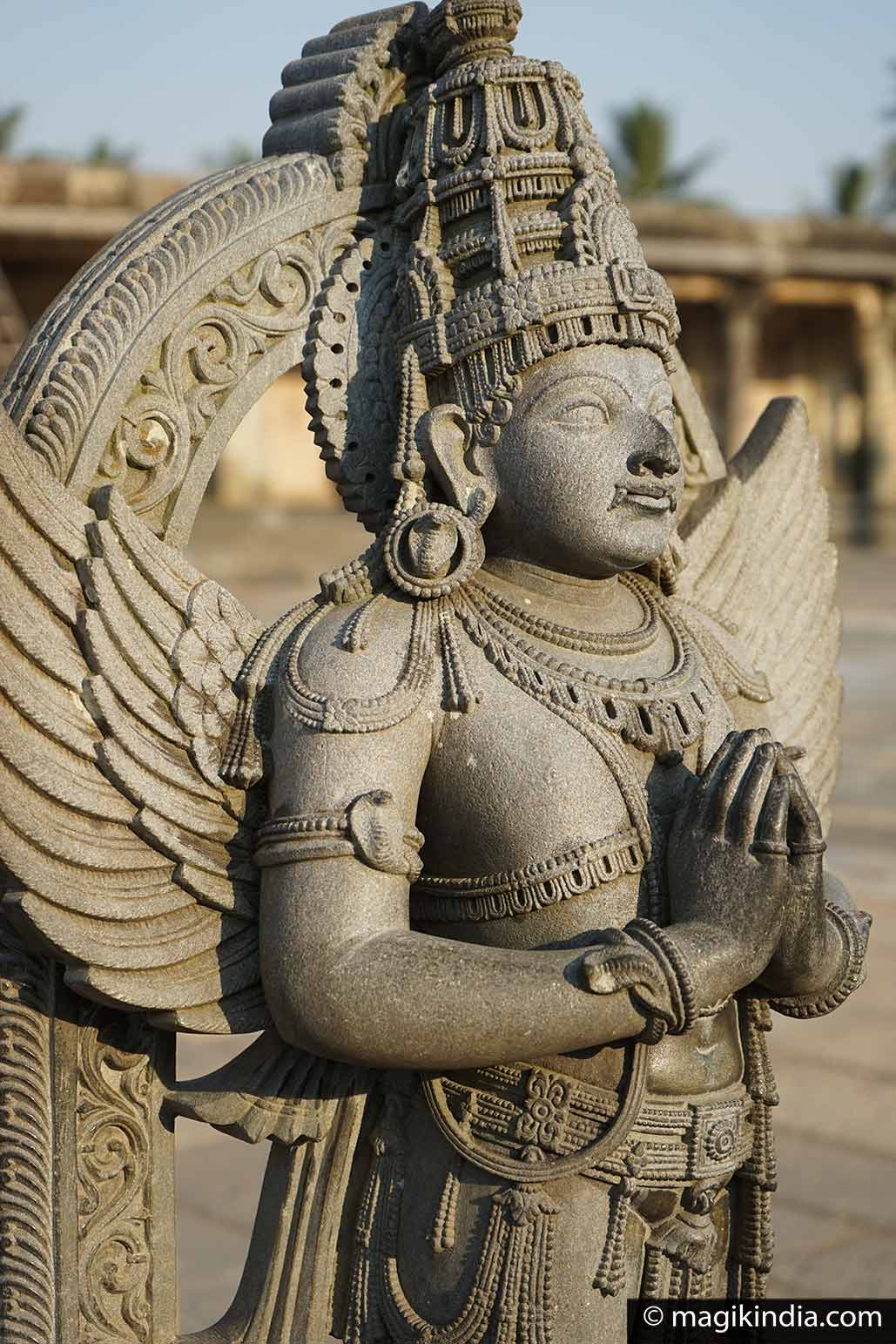
The sanctuary is particularly noteworthy. The lintel of the front door is intricately carved from black shale and the uprights are flanked by life-size sculptures of Dvarapalaka or the temple guardians.
On the altar stands a 6-foot statue of Vishnu, holding an attribute in each of his four hands: disk (chakra), sceptre (gadha), lotus flower (padma) and conch shell (shanka).
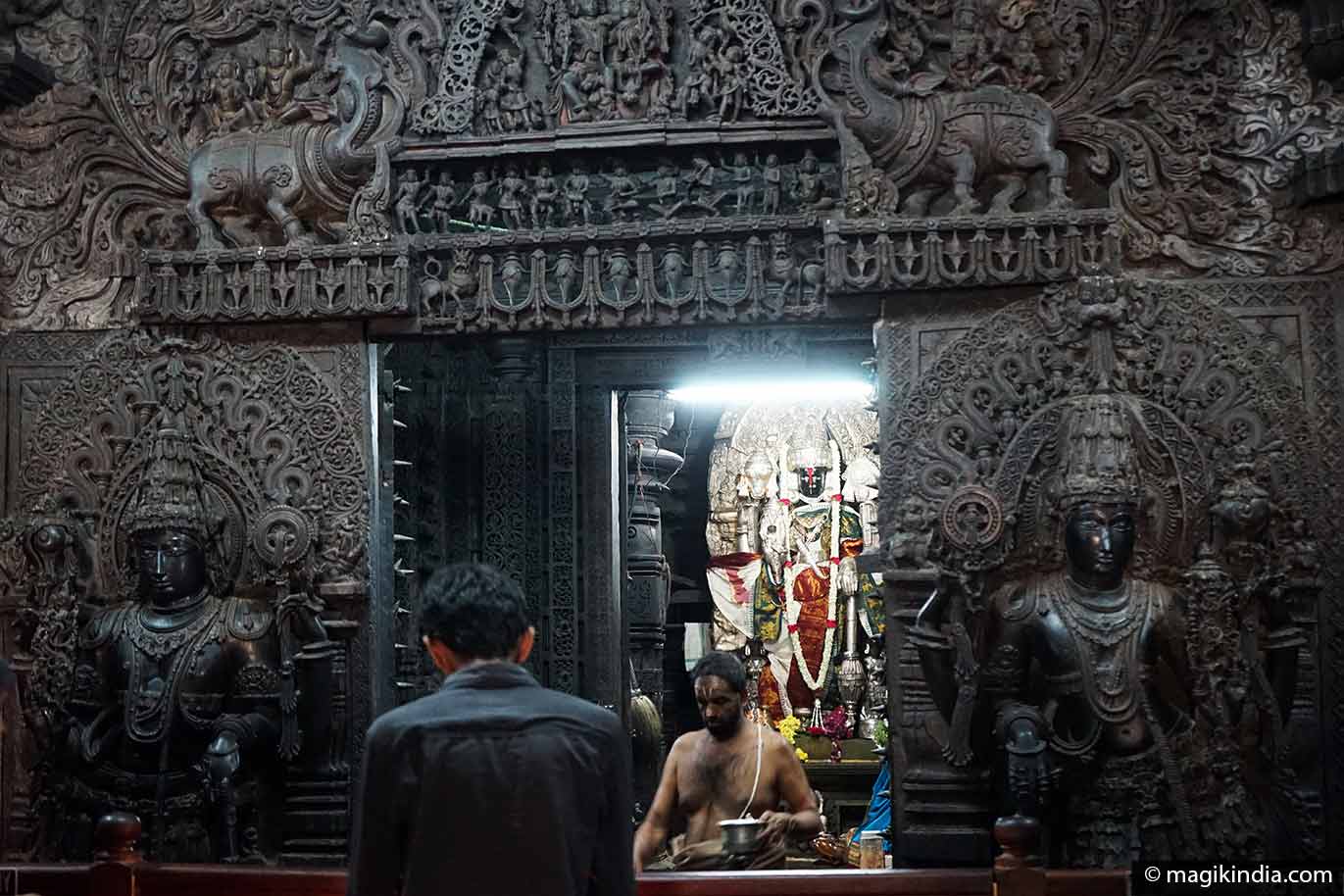
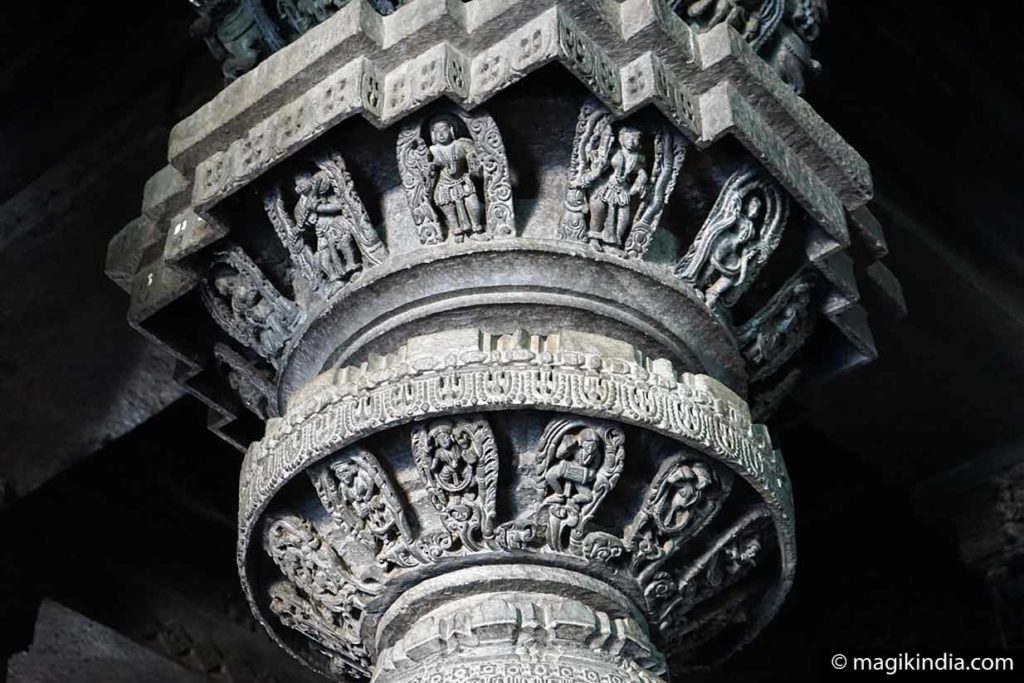
The outer walls of the temple are richly adorned with sculptures of deities, dancers and musicians as well as frescoes depicting different episodes from the epics of Mahabharata and Ramayana.
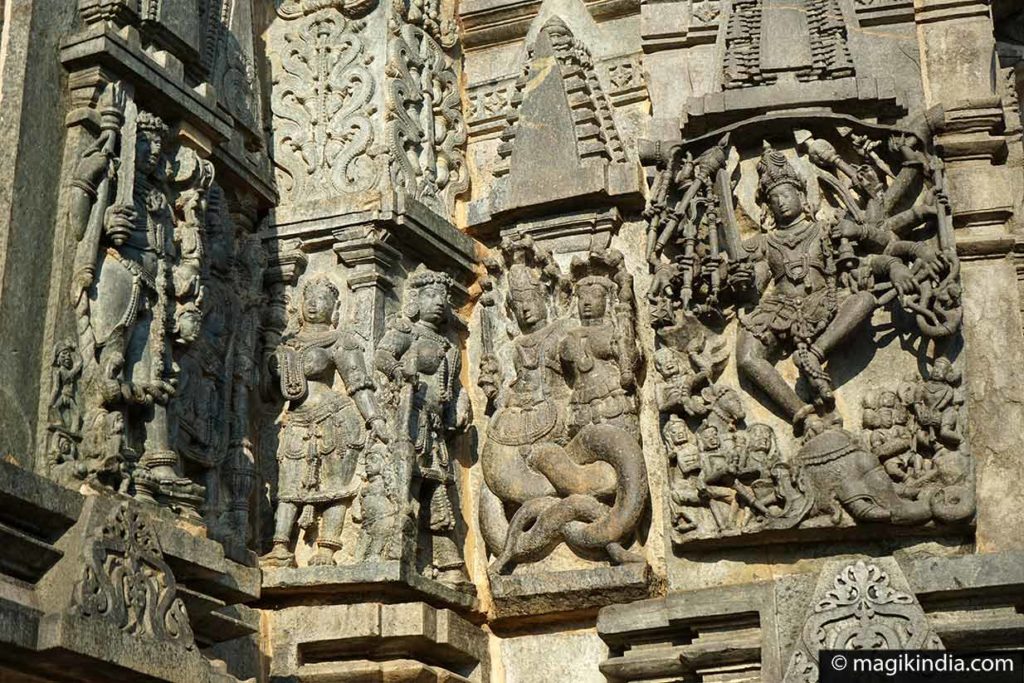
The minor temples of the complex
Kappe Chennigraya Temple
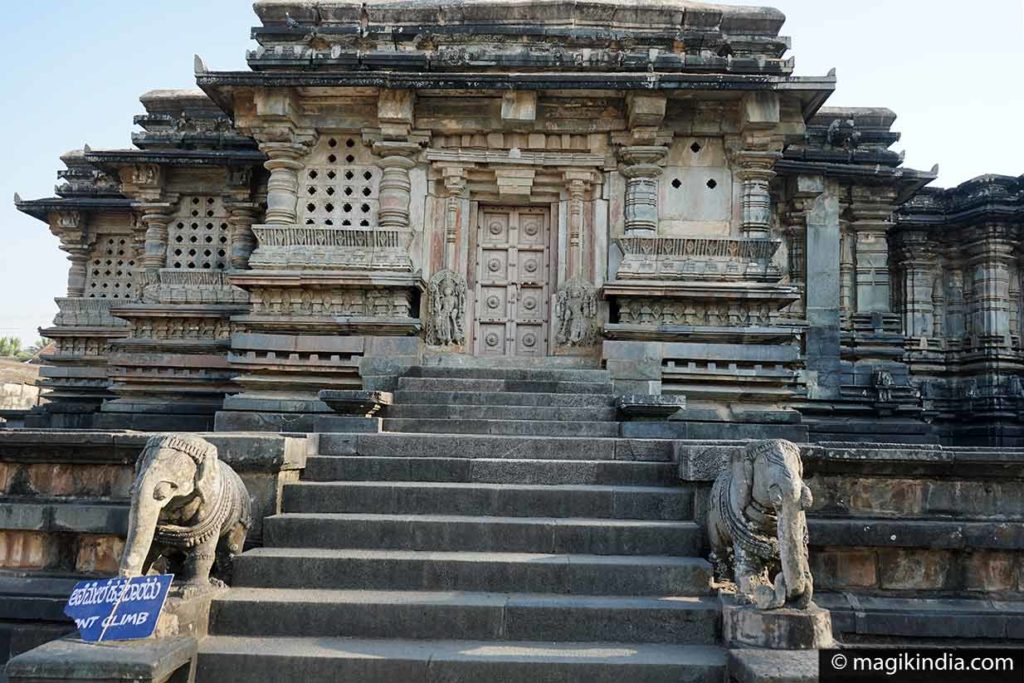
Commissioned by Shantala Devi, the wife of King Hoysala Vishnuvardhana, Kappe Chennigraya was built at the same time as the Chennakeshava temple and is believed to be a more modest version of the latter.
It includes two shrines, one dedicated to Venugopala and the other to Chennigaraya (local popular name for Chennakeshava, Vishnu).
Veeranarayana Temple
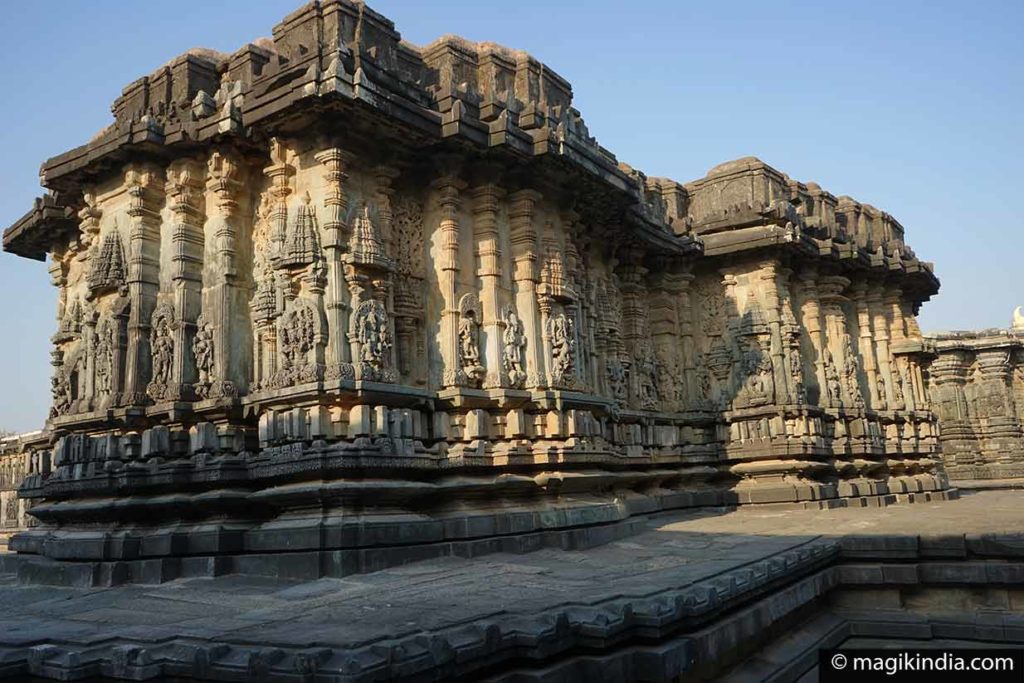
Located to the west of the Chennakesava Temple, Veera Narayana is dated to the 12th century. It is dedicated to Lakshmi Narayana, a manifestation of Vishnu when accompanied by his wife, Lakshmi, the goddess of prosperity.
This small building nevertheless has 59 remarkable reliefs on its exterior walls. They represent several deities of the Hindu pantheon as well as the story of Bhim, one of the characters of Mahabharata, the great Indian epic.
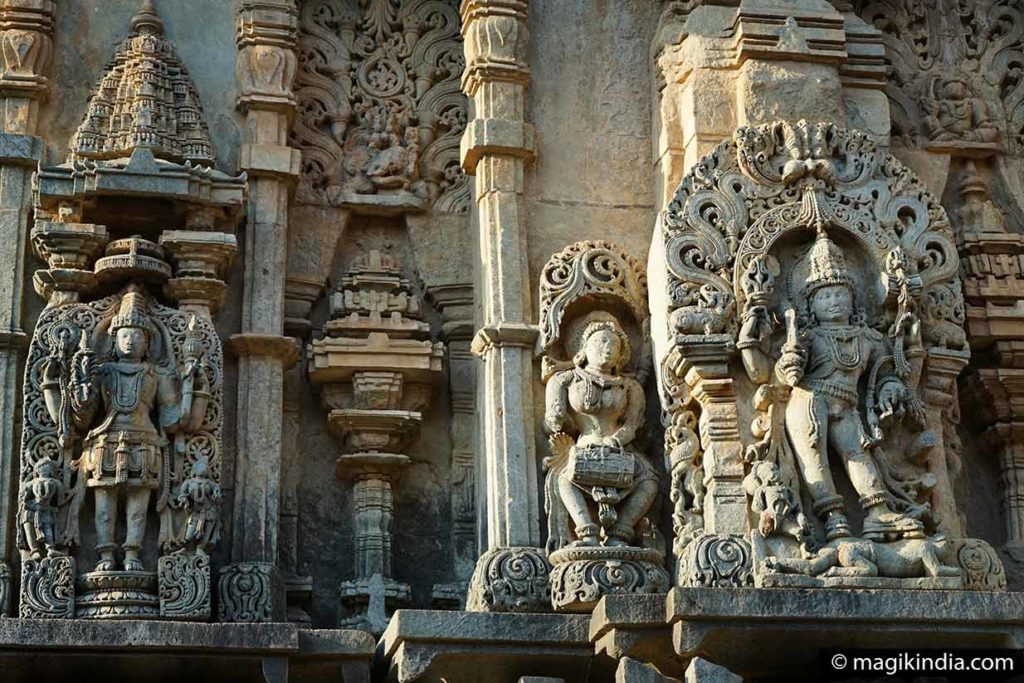
Ranganayaki or Andal Temple
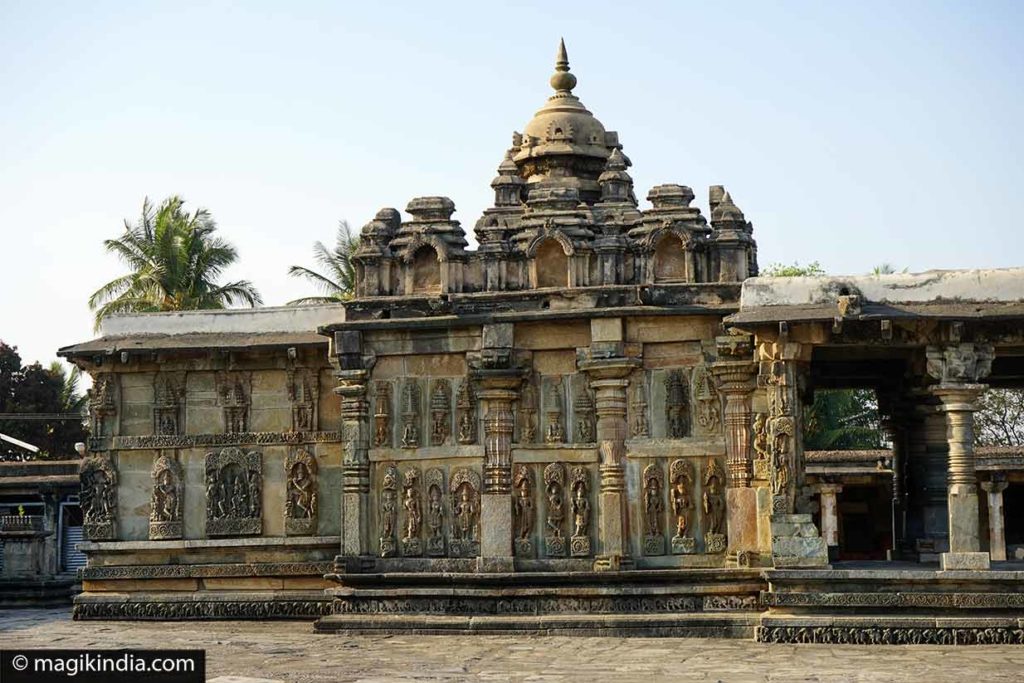
The Andal Temple, also known as the Ranganayaki Shrine, is located northwest of the Kesava Temple. Its style differs from other buildings in the complex, as it was built during the time of the Vijayanagar kings.
It is dedicated to the holy poetess, Andal, author of religious hymns in honor of the god Vishnu and mainly to his avatar Krishna. She is the only woman who appears as a religious authority among all the Gurus of Vishnuism.
Like all the other temples of Belur, its outer wall is abundantly decorated with around thirty sculptures of deities from the Vishnouite, Shivaist and Shaktism traditions.
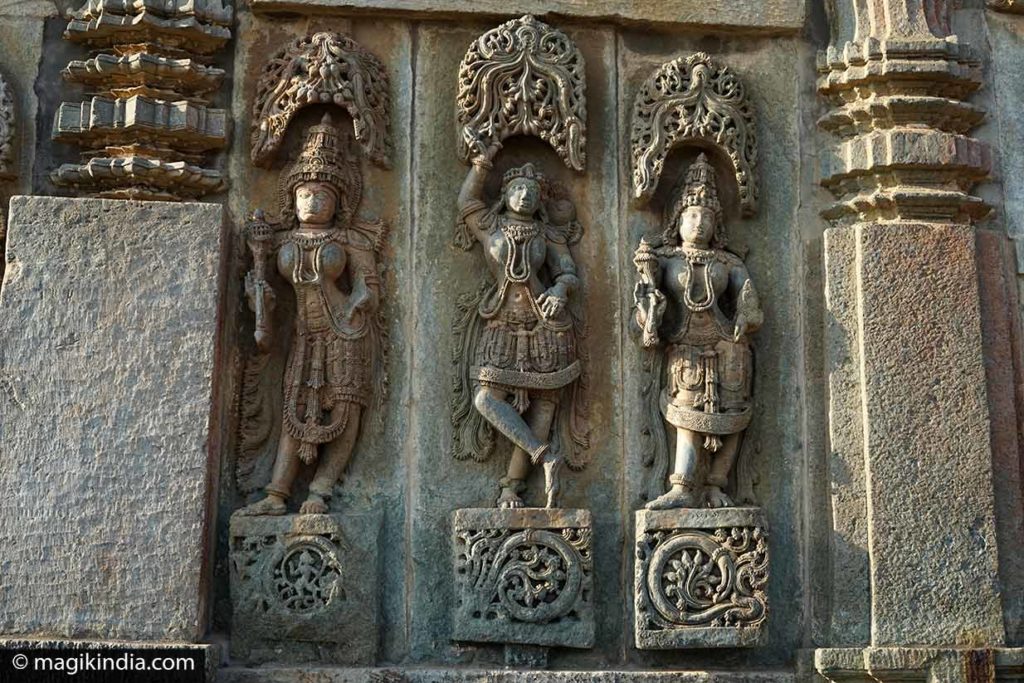
Vishnu Samudra
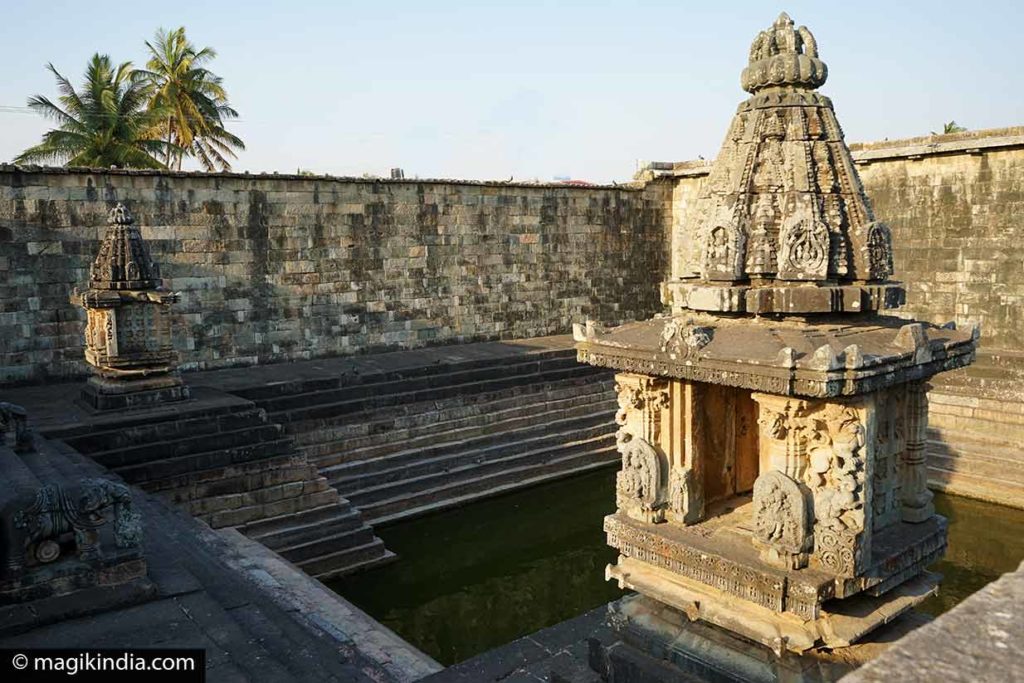
Built much later, during the reign of Narasimha Raya of the Vijayanagar dynasty (1431–1491 CE), this basin was used for Hindu ablution and rituals. Choultries (resting place for travelers) were subsequently added.

